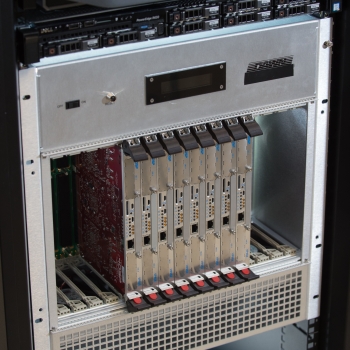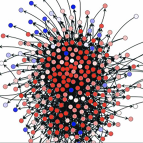Advanced Graph Processor

Graphs are often used to represent data-intensive financial transactions, DNA sequencing, social networking, and internet traffic. Computer algorithms can analyze these graphs to extract and synthesize important information, such as knowledge of key actors in a social network. However, the enormous databases underlying the computations needed for many such analyses can contain billions to trillions of entries that severely tax the performance of even the largest and fastest conventional processors.
To significantly improve the speed of such computations, researchers at Lincoln Laboratory have developed an advanced multiprocessor architecture for handling graph analyses performed on large databases. The prototype of this 64-node processor uses specialized accelerator modules, custom field-programmable gate array (FPGA)-based boards, and a very-high-bandwidth communication network. To date, our inventors have acquired six patents for the technologies that enable this advanced processor.
We have demonstrated that this efficient prototype can achieve a factor of up to a 100 times better performance than that of commercial processors. Our ongoing advancements to this processor are aimed at demonstrating even higher performance on larger systems and developing new software to improve the ease of running applications on the processor.



